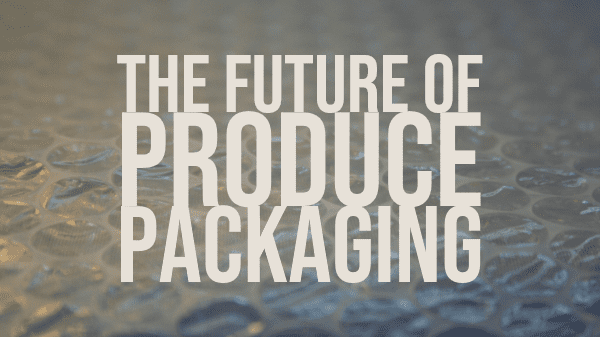
It wasn’t that long ago that all fresh fruits and vegetables were sold bulk, and sophisticated packaging technology was a basket. Today, retailers and consumers alike are seeking much more—they want packaging with more convenience, affordability, and food safety—and designers and innovators are heeding the call.
Packaging is an essential part of the produce supply: without effective packaging, growers can’t pack or ship product, wholesalers can’t receive it or send it to their customers, retailers can’t fill shelves, and consumers can’t buy it and take it home.
Better packaging encourages buyers to spend more and try new things, and ineffective packaging can turn them away from a brand or a product forever. There is no part of the supply chain untouched by packaging from field to fork, and with perishables, it’s essential for innovation to play a role to maintain freshness and safety.
Demand for produce packaging in the United States, reportedly valued in billions, continues to climb. And as healthy eating trends continue, traceability and environment accountability will also rise accordingly, spurring higher demand for packaging to better meet these needs.
Packing and processing benefit from packaging innovation through reduced waste and lower transportation costs, and sales and marketing-focused segments are improved by the ability of packaging to create data about unit sales that’s easier to track and collect without interfering with the integrity of the product.
So, all in all, it’s a win for the greater food industry.
Many recent innovations are focused on convenience, making it easier for consumers to grab and go, with ready-to-eat items of meal kits requiring little to no prep.
This falls into the burgeoning category of so-called “last mile” packaging—the crucial final stages between when the product arrives at retail and reaches the consumer as part of a meal. Ensuring fruits and vegetables are as fresh and flavorful as possible, hours or days after harvest, is the end goal of last-mile packaging.
This is multi-part feature on produce packaging adapted from the October 2019 issue of Produce Blueprints.
It wasn’t that long ago that all fresh fruits and vegetables were sold bulk, and sophisticated packaging technology was a basket. Today, retailers and consumers alike are seeking much more—they want packaging with more convenience, affordability, and food safety—and designers and innovators are heeding the call.
Packaging is an essential part of the produce supply: without effective packaging, growers can’t pack or ship product, wholesalers can’t receive it or send it to their customers, retailers can’t fill shelves, and consumers can’t buy it and take it home.
Better packaging encourages buyers to spend more and try new things, and ineffective packaging can turn them away from a brand or a product forever. There is no part of the supply chain untouched by packaging from field to fork, and with perishables, it’s essential for innovation to play a role to maintain freshness and safety.
Demand for produce packaging in the United States, reportedly valued in billions, continues to climb. And as healthy eating trends continue, traceability and environment accountability will also rise accordingly, spurring higher demand for packaging to better meet these needs.
Packing and processing benefit from packaging innovation through reduced waste and lower transportation costs, and sales and marketing-focused segments are improved by the ability of packaging to create data about unit sales that’s easier to track and collect without interfering with the integrity of the product.
So, all in all, it’s a win for the greater food industry.
Many recent innovations are focused on convenience, making it easier for consumers to grab and go, with ready-to-eat items of meal kits requiring little to no prep.
This falls into the burgeoning category of so-called “last mile” packaging—the crucial final stages between when the product arrives at retail and reaches the consumer as part of a meal. Ensuring fruits and vegetables are as fresh and flavorful as possible, hours or days after harvest, is the end goal of last-mile packaging.
This is multi-part feature on produce packaging adapted from the October 2019 issue of Produce Blueprints.



